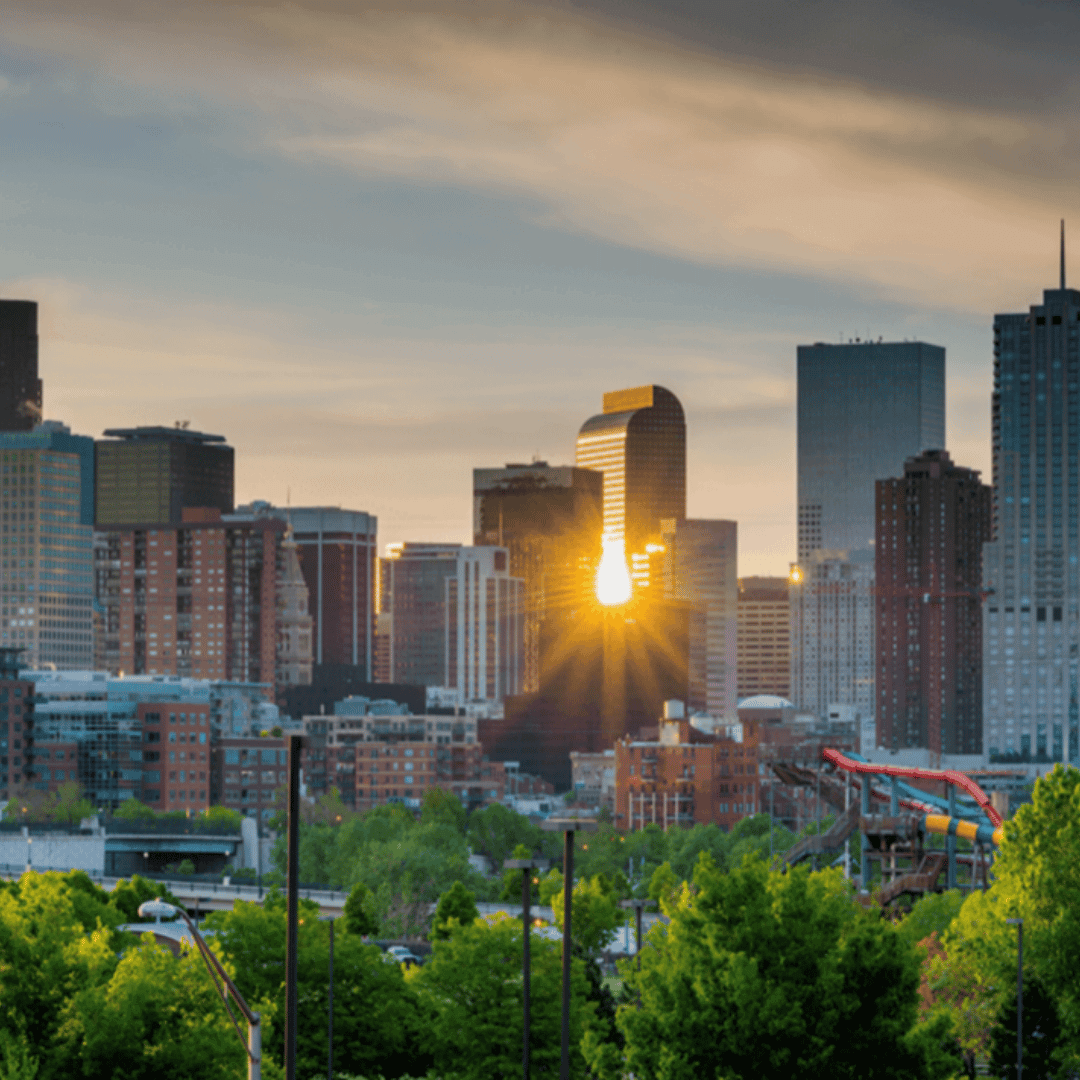Each September, Denver, Colorado, transforms into a global hub for collectors, curators, and crystal enthusiasts as it hosts the annual Denver Gem & Mineral Showcase. What began as a small club-organized event in the mid-twentieth century has grown into a sprawling, multi-venue attraction of international scope, reflecting both the state's geological richness and the growing enthusiasm for gem and mineral collecting in the United States.
Foundations in the Rockies (1950s–1967)
The roots of Denver’s gem show tradition reach back to the 1950s and early 1960s, when local rock and mineral clubs in Colorado began organizing small, independent exhibitions. Prominent among these were the Colorado Mineral Society, the Denver Gem & Mineral Guild, Mile-Hi Rock & Mineral Society, and the Littleton Gem & Mineral Club. These organizations regularly hosted member shows, swap meets, and educational events, fostering a growing community of enthusiasts and collectors. These modest gatherings laid the groundwork for something greater.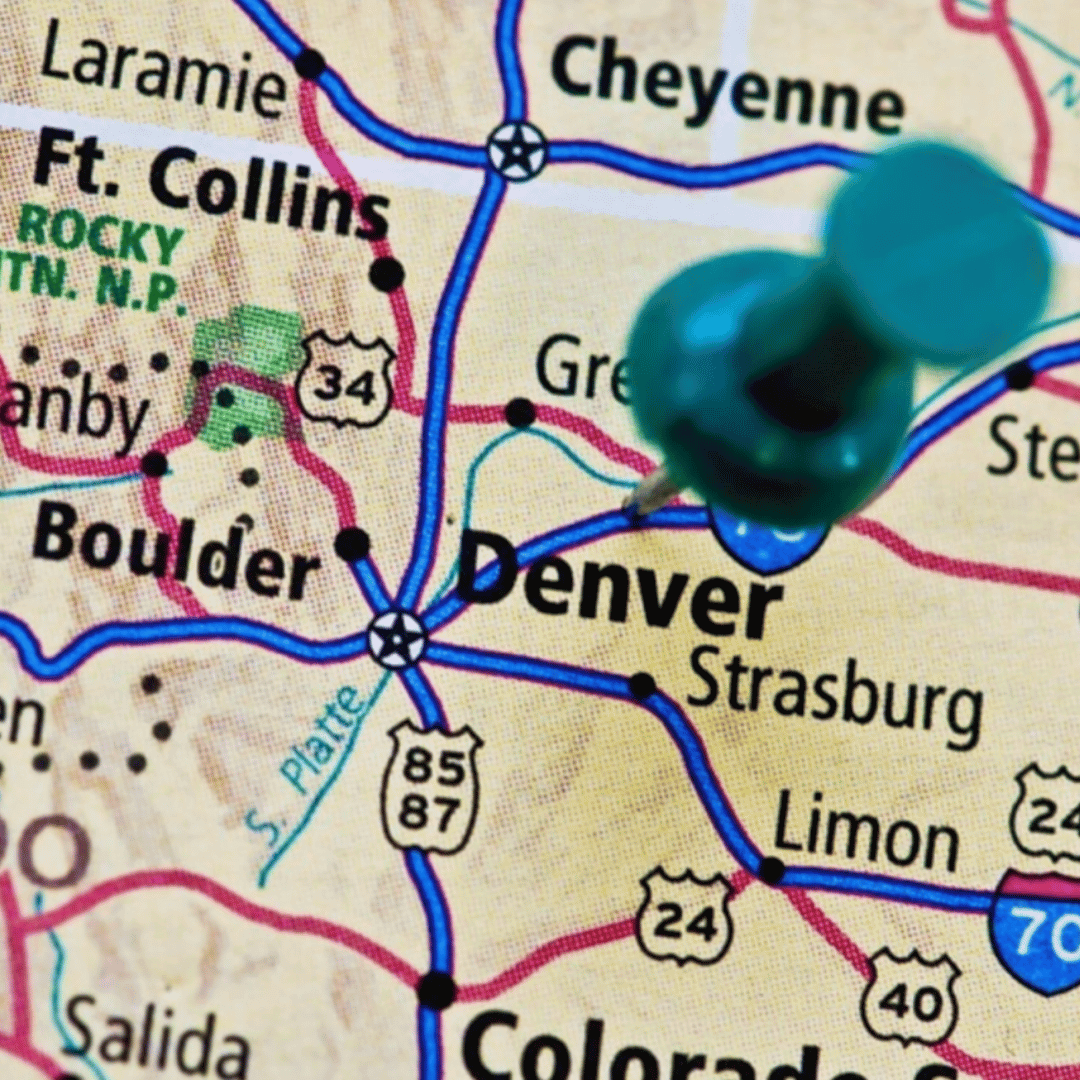
The catalyst for unification came through the efforts of leaders within these clubs. Discussions between club representatives began in the early 1960s, culminating in the decision to organize a single, collaborative event that would elevate the visibility and professionalism of Denver’s mineral scene. Leonard Himes, co-founder of the Just Minerals & Crystals Event - Denver, recalled, "The show was operated by a show committee composed of representatives of several Denver-area clubs that agreed to a joint effort."
Finding a Home, Creating a World-Class Show (1968-1976)
In his 109-page 2017 manuscript, The Denver Gem & Mineral Show: Fifty Years in the Making, Mark Ivan Jacobson gives a year-by-year account of the Denver Gem & Mineral Show between 1968 and 2017. Here's a summary of Jacobson's account of those early years.
In January 1968, six clubs incorporated as the Federated Council of Gem & Mineral Societies (FCGMS). Chuck Musselman, president of the Gates Rock & Mineral Club, spoke to his members, conveying the excitement, opportunity, and hard work ahead of them in creating a true joint show: "Incorporation papers have been filed ... The purpose of (FCGMS) is to put on the best rock show the state of Colorado has ever had the opportunity to see." The first Colorado state federated show, originally called the "Colorado State Federation Gem & Mineral Show," was held on June 15-16, 1968, at Englewood High School. It included 203 mineral display cases and 19 mineral and fossil dealers. The entrance fee was 75¢ for adults. The show budget was $1,800. The first show made an "embarrassingly high profit, so the entrance fee was lowered" for the next year to 50¢ for adults and 25¢ for children under 16.
The 1969-71 shows were held at the Jefferson County Fairgrounds in Lakewood, Colorado. The 1969 show had a paid attendance of 2,700 adults and children, with the theme "Colorado Treasure for You." The third show in 1970 had the theme "Geowhizical." Dealer's tables cost $50, up from $30 at the 1968-69 shows. The 1971 show's theme was "Gem-O-Fun of '71," and the featured high-profile exhibit was a carved bust of Cuauhtemoc, the last Aztec emperor, carved in Leopard opal (black basalt inlaid with "play-of-color" opal).
The 1972-74 shows moved to the Adams County Fairgrounds in Henderson, Colorado, where the fairgrounds hall was four times larger than the hall at Jefferson County's. The 1972 show drew 4,855 paid adults and 2,306 school-aged children, who were accompanied by their schools and received free admission. It was the first three-day show, adding Friday as a free day for children arriving in school buses with their teachers. Fridays continued to be school field trip day at the show for almost 50 years. It's unclear when the show was officially named the Denver Gem & Mineral Show, but Jacobson first uses this moniker for the 1972 show in his manuscript. The 1973 show included a special exhibit for blind attendees. The "Dinner in Stone" featured a complete place setting with various foods created from carved and polished rock materials, allowing the blind to feel the differences. Labels were printed in Braille, and a volunteer manned the display to answer questions. The 1974 show's theme was "Colorado's Mineral Showcase," which meant exhibiting the best minerals found in the state, including exhibits of rhodochrosite from Sweet Home Mine in Alma, Colorado, by Richard Kosnar, Colorado minerals on display from the Denver Museum of Natural History, organized by Curator Jack Murphy, and Pikes Peak minerals from George Fisher.
The 1975 show, themed "Rockhound's Rendezvous" was the much-anticipated combined show of the American Federation, Rocky Mountain Federation, and Colorado Federation of Mineral Societies, all hosted by what was then called the Denver Council of Gem & Mineral Societies (formally renamed Greater Denver Area Gem & Mineral Council in 1986). The show was held at the National Western’s Exhibition Center near I-25 and I-70, better known for its livestock exhibitions, the lingering scent of which was painfully obvious during the show. Because the 1975 show was combined with other large mineral federations, it was significantly bigger and one day longer than all previous shows. The show was a four-day event featuring 66 mineral dealers and seven exhibiting museums. New dealers included Wayne and Dona Leicht of Kristalle, the Rocksmiths, Pala International, Oceanside Gem Imports, Inc. with Denise B. Sklar, What on Earth with Terry Peyton, Rock Currier, Wright’s Rock Shop, and Eugene and Sharon Cisneros. The museum exhibits had expanded significantly: the Smithsonian had two cases—one of Minerals from France and the other of faceted and polished stones created by John Sinkankas, including a 911-carat aquamarine; Harvard University displayed Colorado-type minerals; and the American Museum of Natural History (NYC) displayed an assortment of specimens from the Tiffany/J.P. Morgan collection.
The 1976 show, themed "Gemtennial '76," was the first held at the Denver Merchandise Mart, with admission being raised to $1.75 for adults and children under 12 free. The show would continue to be held at the Merchandise Mart (later renamed simply The Denver Mart) until the property was sold in 2021 (more on this below).
Growth and Prestige (1977–1990s)
Throughout the 1970s and 1980s, DGMS continued to grow steadily in stature. The event featured themed exhibits, including "Minerals of Colorado," "Gold and Silver," and "Minerals of Africa," curated in collaboration with regional and national museums. Himes noted, "It was a serious improvement of the show when the committee actively solicited international museum displays." Exhibitors ranged from small hobbyists to institutional representatives, including the Smithsonian Institution, Denver Museum of Nature & Science, and other prominent natural history collections. Educational programming expanded to include lectures by notable geologists and mineralogists, field trips, and workshops.
By the mid-1980s, DGMS was drawing over 10,000 attendees annually, with more than 150 dealers participating. Anecdotal accounts from longtime volunteers recall lines wrapping around the venue on opening day, and hotel lobbies buzzing with collectors negotiating early trades and preview sales.
In 1983, the first satellite mineral show appeared in September, not far from DGMS. The IMD (Independent Mineral Dealers) Mineral Trade Show, held at the Holiday Inn North in Denver, featured 12 dealers and was produced by Tom Palmer, owner of Crystal Cavern Minerals in El Paso, Texas. Palmer sold the show to Martin Zinn III in 1985, who renamed it the Colorado Mineral & Fossil Show (more on CMFS and Martin Zinn Expositions below).
1987 marked the start of a second satellite show, located just to the south and in sight of CMFS, at what was then called the Viscount Hotel, situated at the intersection of Pecos and Bannock Streets. Initially, the show was called the Great American Gem Show and was owned by U.S. Gem Expos, Inc., of Tucson. Over the next 20 years, the show changed owners and its venue changed names several times, until 2012, when it was sold to Jewelry, Gem & Mineral (JG&M) Expos, LLC, also based in Tucson. The JG&M Expo in Denver had a very successful run until the hotel venue sold out, and the COVID pandemic hit. The show owner, Danny Duke, ceased operations in 2023, finding it too difficult to find another venue. Duke and his wife, Asherah, still own and operate the longstanding JG&M Expo in Tucson, as well as another rock and mineral show in Quartzsite, Arizona, known as the Prospectors Panorama.
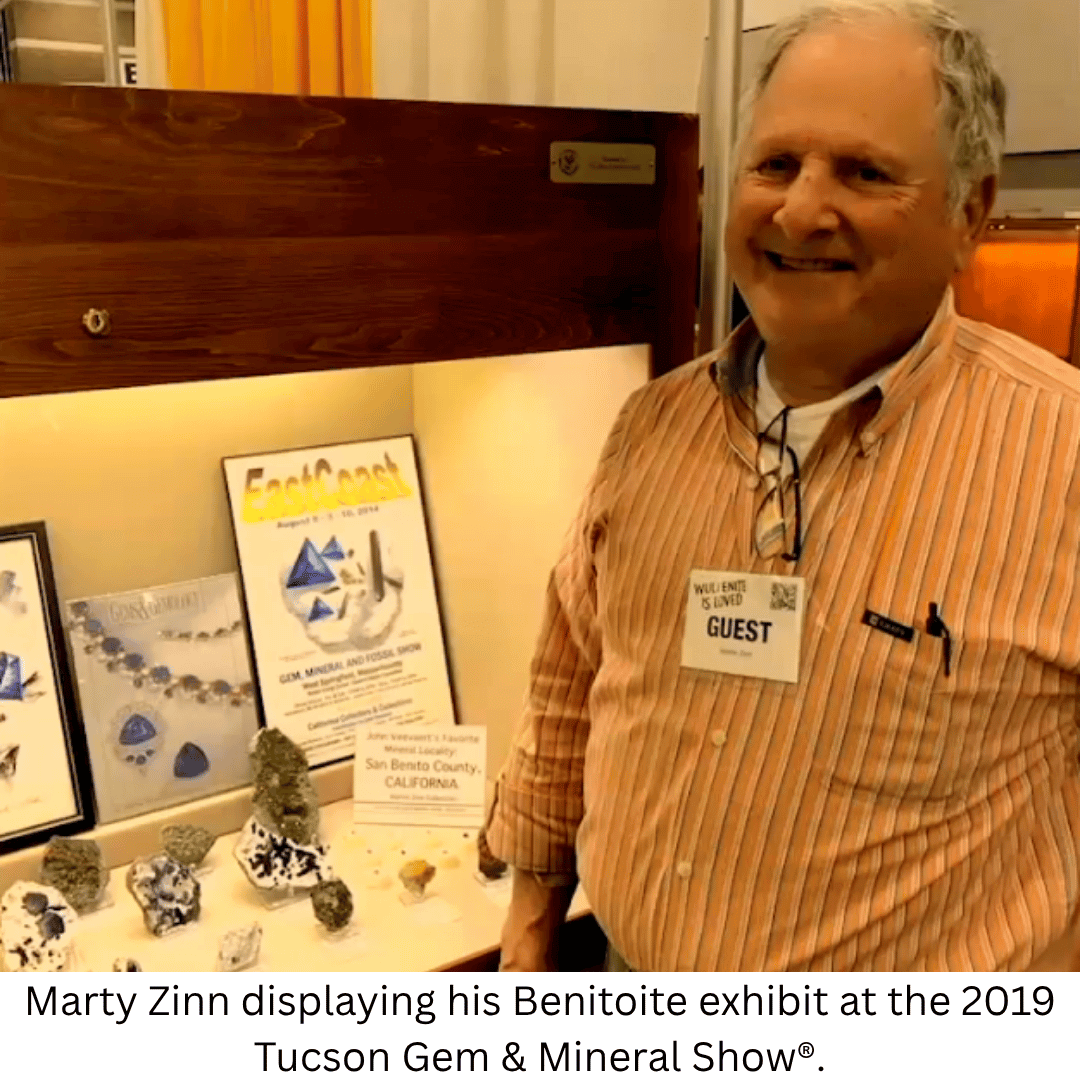 The following year, 1988, a third satellite show, the "Denver Gem, Mineral & Fossil Show," owned by David Patrick of American Trade Shows, opened at the Regency Hotel, a bit further south of I-70 on I-25.
The following year, 1988, a third satellite show, the "Denver Gem, Mineral & Fossil Show," owned by David Patrick of American Trade Shows, opened at the Regency Hotel, a bit further south of I-70 on I-25.
Also in 1988, DGMS became very active in awarding grants, donating over $17,000 per year to support school, university, or society field trips, school specimen collections, lapidary tools and video equipment for earth science presentations or school science fairs, publication support to fund articles or photographs, museum support for specimen acquisition, building exhibits, display case renovation, or photographic equipment, and much more.
In 1989, the satellite shows continued to do well. CMFS at the Holiday Inn had expanded to include more than 150 dealers across three floors, the parking lot edges, and the hotel entrance areas. Marty Zinn launched the first voice auction benefit alongside the hotel pool to raise funds for two Denver museums — the Colorado School of Mines Geology Museum and the Denver Museum of Natural Science. He continued to auction off items to benefit these museums for many years. Zinn also played a key role in organizing free van shuttles between DGMS and the satellite shows. Additionally, in 1989, a new fourth satellite show appeared north of DGMS at the Holiday Inn-Northglenn, the four-day Gem & Lapidary Wholesalers (G&LW) Show, whose owners, based in Flora, Mississippi, today operate 16 shows nationwide, including one of the largest dual-tent shows in Tucson: G&LW Gem Mall and G&LW Holidome.
A Citywide Showcase Emerges (1990s–2010)
By the 1990s, DGMS was attracting thousands of attendees from across the country and internationally, with total attendance peaking in 1993 at over 12,000 attendees (over 10,000 paid). Collectors, scientists, and dealers recognized the Denver show as a premier international event for acquiring rare finds, discovering new materials, and connecting with a knowledgeable and passionate community. Several high-profile exhibits also left a lasting impression on attendees, including museum-sponsored displays of fluorescent minerals under UV lighting, curated gem halls showcasing both cut and rough stones from Madagascar, Afghanistan, and Colombia, and full-scale fossil reconstructions of prehistoric marine reptiles.
The 1990s also marked a turning point as Denver hosted several more satellite shows during the same September timeframe. Independent promoters, seeing the success of the main show and the new satellite shows, began organizing complementary events at hotels and warehouses throughout the Denver-metro area. Himes recalled, "As satellite shows developed, they set to open earlier than DGMS so that it would be the 'grand finale' much like the annual Tucson Gem & Mineral Society's "Main Show" at the Tucson Convention Center in February."
There were two new Denver shows in 1994. The Independent Wholesale Gem & Jewelry Show, organized by Leon Ritzler, began in the Pavilion building, which was part of the Merchandise Mart, while the Denver Gem Faire, organized by Allen Van Volkinburgh, opened at the National Western Stock Show Complex. The Independent Wholesale Gem & Jewelry Show changed hands in 1996 and became the International Gem & Jewelry Show. The Rockville, Maryland, show promotion company, which today owns and operates over 30 IGJS shows nationwide, features its September Denver show as one of its largest wholesale-only events. The show is now known as Intergem Wholesale Gem & Jewelry Show, and it's still thriving in 2025, now located at a venue called The Brighton in Downtown Denver.
In 1995, a new show, the Bead Renaissance Festival, produced by J&S Promotions, opened at the Radisson Greystone Castle at I-25 and 120th Ave. Bead Renaissance moved to two other Denver hotel venues in the years ahead and finally to the Merchandise Mart in 2014 (more on that below).
One of the most influential contributors during this period was Martin Zinn Expositions, which played a critical role in shaping Denver’s reputation as a hub for fine mineral and fossil displays. Marty Zinn, whom we discussed earlier, became one of the most respected, important, and best mineral and fossil show producers in the world. The CMFS show in Denver was the second mineral and fossil show he produced; his first was the East Coast Gem & Mineral Show in Springfield (later relocated to West Springfield), Massachusetts. In 1998, Zinn started his second show in Denver — the Colorado Fossil Expo, contiguous with the DGMS space via a doorway on the northeast corner of the Merchandise Mart. A visitor to Zinn's Colorado Fossil Expo was greeted by two enormous skeletal dinosaurs: a stegosaurus and a Tyrannosaurus rex. The dealers sold invertebrate, vertebrate, and plant fossils, as well as fossil books, children’s books, dinosaur T-shirts, and jewelry made with fossils. 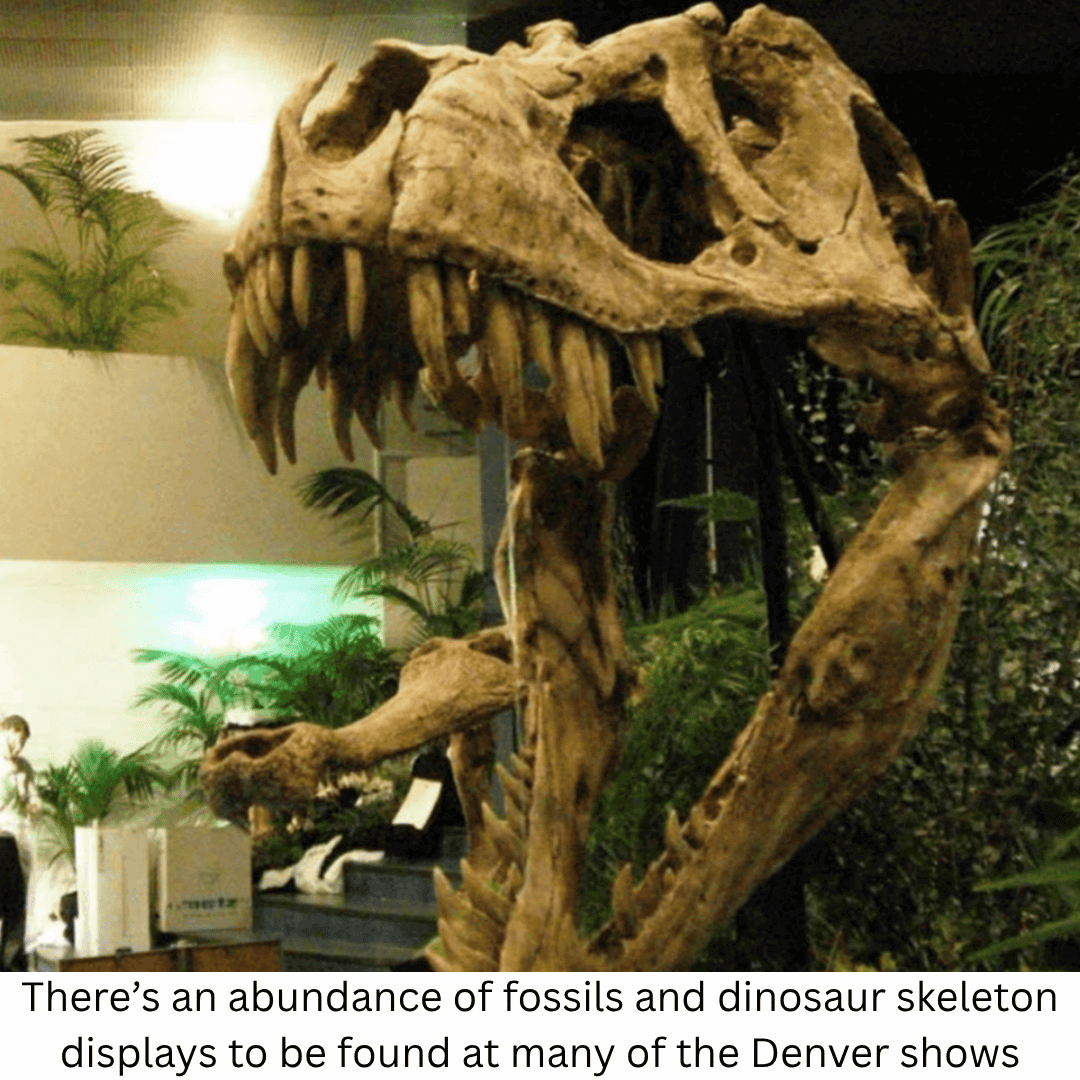
Martin Zinn Expositions went on to produce the famous Arizona Mineral & Fossil Shows in Tucson, two West Coast Mineral & Fossil Shows in California, a short-lived show in Cartersville, Georgia, and a spring Colorado Mineral & Fossil Show in Denver.
Zinn's shows emphasized museum-quality specimens, personal dealer relationships, and an intimate setting for serious collectors. "I wanted to create a show where dealers and collectors could connect in a relaxed but professional environment, without the overwhelming scale of some of the larger events," said Zinn in a 2015 interview. "The goal was to give people time to have real conversations about the specimens they love."
Longtime exhibitor Wayne Thompson echoed this sentiment, noting, "The Zinn shows were a game-changer. You knew you’d be seeing some of the best minerals in the world—and the people behind them. That’s what made Denver special." The Zinn shows quickly gained a loyal following and helped raise the overall caliber of Denver’s showcase.
In 1999, a new satellite show opened: Denver Four Points Expo, at the Sheraton Four Points Hotel on Quebec Street, off I-70, produced and operated by Hartley Enterprises, Inc. of Tucson. Both this show and the Denver Gem Faire at the Stock Show Complex were discontinued in 2001.
Jacobson writes about the 2001 Denver Showcase, "The attack and destruction in New York City on September 11, 2001, affected DGMS and the adjacent satellite shows. DGMS was held September 14-16, 2001. The satellite shows were open from September twelve to sixteen. All U.S. civilian air flights were canceled from September 11-13, 2001, but the resulting backlog of stranded passengers prevented visitors, mineral dealers, exhibitors, from attending the show, and mineral specimens from arriving. The atmosphere at the shows was subdued and tense. The Greater Denver Area Gem & Mineral Council donated the profits from the 2001 show to the Red Cross Liberty Fund for victim relief. The effect on the show exhibits was profound. More than half the museum curators were unable to obtain flights to Denver. Local collectors helped fill the gap. Last-minute exhibitors were still filling cases up until noon on Friday. The show successfully filled 90 cases, including displays from clubs, groups of individuals, and a handful of institutions that managed to arrive. There were 106 retail and 11 wholesale mineral and jewelry dealers; only four dealers did not arrive. The total attendance was estimated to be approximately 8,000. Mr. Bones, the popular walking dinosaur skeleton portrayed by Tim Seeber, wandered the halls of both the Fossil Expo and DGMS, amusing children and sometimes adults. As the Fossil Expo proclaimed in bold letters, MR. BONES IS BACK!"
A new satellite show in 2003, named the Miner's Co-op Mineral Show, appeared across the street from the Merchandise Mart on the southeast corner of East 58th Avenue and Logan Street. Local miners set up tables sheltered by tents for this three-day outdoor show, promoted by Jack Crawford of Nathrop, Colorado.
In 2005, a significant show came to Denver—the Denver Expo Gem Show, produced by Al Sargent of TEP Gem Shows, Inc., out of Tucson. At the time, Sargent also owned and operated the Tucson Electric Park (TEP) Gem & Mineral Show in Tucson. Following Sargent's passing in 2010, both the Denver Expo and the TEP Show came under the stewardship of the Gehring family (read "From Tucson Electric Park to the Kino Gem & Mineral Show: A Glittering Evolution in Tucson"). The TEP Show, later renamed the Kino Gem & Mineral Show, is one of the largest shows in Tucson, albeit one of the largest in the world. The Denver Expo Gem Show has become one of the most important shows of the September Denver Showcase, with nearly 100 vendors from around the world. The Denver Expo was first located at the Best Western Stapleton on Quebec Street, near I-70. In 2006, it moved to the National Western Complex, where it continues to thrive today.
In 2006, Desert Gems, a rock shop on Wadsworth Boulevard in Lakewood, Colorado, owned by Steve and Janet Applebaum, decided to open their warehouse to wholesale businesses during the September showcase. This started as the Desert Gems Warehouse Show at 810 Quail Street in Lakewood. The Applebaums sold Desert Gems and in 2008 began a new company, The Rock Warehouse. They kept the warehouse on Quail Street and along with two other rock and mineral wholesalers—Victor Consuelo of Vicjon Peru and Frank Wang of JK Stone USA, both housed in two separate units in the same warehouse as Rock Warehouse—launched the Colorado Independent Warehouse Show, still a successful wholesale show today in September's showcase. JK Stone USA branched out in 2022 and bought its warehouse near the intersection of I-25 and I-70. Now they host their own show, the JK Stone Denver Warehouse Show, just a few minutes' drive west of the National Western Complex.
Another significant milestone occurred in 2009, when entrepreneur Lowell Carhart and members of his family formed Eons Expos, LLC, and launched the Denver Coliseum Show, emphasizing affordability and dealer access. Inviting the 17 dealers of the already established Miner's Co-op Mineral Show to join him at the Denver Coliseum, the show quickly grew in size and popularity, providing a platform for dozens of vendors selling minerals, fossils, beads, and lapidary equipment. Carhart later expanded the event across the highway to the National Western Complex (where he formed an alliance with the Denver Expo Gem Show) and changed the name of the Denver Coliseum Show to simply The Denver Show, eventually held across both the National Western Complex and the Denver Coliseum.

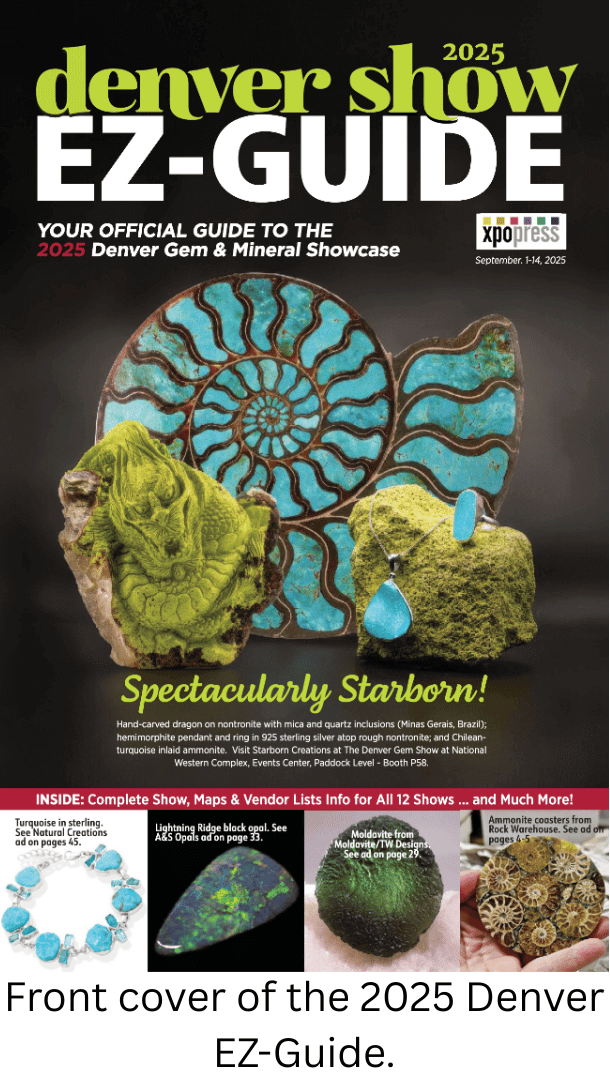 An important publishing contributor arrived on the Denver Showcase scene in the early 2000s. Xpo Press began publishing the Denver EZ-Guide in 2003, launching a comprehensive navigation tool for the growing number of shows and vendors. As the number of venues and independent show producers increased, the EZ-Guide emerged as a vital central resource that unified the entire Denver gem and mineral experience under one cohesive reference. The EZ-Guide and the Xpo Press website not only enhanced the attendee experience but also helped unify the marketing of the growing number of shows and vendors.
An important publishing contributor arrived on the Denver Showcase scene in the early 2000s. Xpo Press began publishing the Denver EZ-Guide in 2003, launching a comprehensive navigation tool for the growing number of shows and vendors. As the number of venues and independent show producers increased, the EZ-Guide emerged as a vital central resource that unified the entire Denver gem and mineral experience under one cohesive reference. The EZ-Guide and the Xpo Press website not only enhanced the attendee experience but also helped unify the marketing of the growing number of shows and vendors.
The Modern Showcase (2010s–Present)
By the 2010s, the expanded Denver Gem & Mineral Showcase had grown to encompass between ten and twelve simultaneous shows. Together, these events drew tens of thousands of attendees each year and provided a platform for as more than 1,000 domestic and international vendors, dealers, and exhibitors specializing in rocks, minerals, fossils, gems, and jewelry.
The modern era of the showcase has been defined by a variety of world-renowned vendors, such as Collector's Edge Minerals, Kristalle, and The Arkenstone, who have brought elite mineral specimens, some valued in the tens or even hundreds of thousands of dollars. These dealers have helped elevate the profile of the Denver shows within the global fine mineral trade. Denver also became a hub for renowned jewelry designers, including Starborn Creations, Sanchi & Filia P Designs, and IGM, to showcase and sell their creations. And after Tucson, there's no better place in the world to find fossils than Denver, featuring fossil dealers like GeoDecor, Sahara Overland, and top megalodon teeth seller, Sharksteeth.com.
For a few years during this period of the showcase, most of the high-end fine mineral dealers set up at the Denver Fine Mineral Show at the Denver Marriott West in Golden, Colorado. The last day of this show would end in time for these dealers to set up their valuable wares at DGMS over the previous three days of the ten-day-long citywide showcase. Show producer Dave Waisman, who had operated the Fine Mineral Show at Westward Look Resort in Tucson for several years prior, brought the high-end specimen show to Denver, where it ran from 2014 to 2019.
 Sadly, Marty Zinn's Colorado Fossil Expo closed its doors in 2014. The space north of the Denver Gem and Mineral Show in the Mart Plaza thus became available. The four-day Bead Renaissance show saw the opportunity and rented the Mart Plaza in 2014.
Sadly, Marty Zinn's Colorado Fossil Expo closed its doors in 2014. The space north of the Denver Gem and Mineral Show in the Mart Plaza thus became available. The four-day Bead Renaissance show saw the opportunity and rented the Mart Plaza in 2014.
Sandra Gonzales of RMGM Promotions purchased the Colorado Mineral and Fossil Show from Zinn following the September 2016 event (read "The Story of the Colorado Mineral & Fossil Shows and RMGM Promotions"). After acquiring the show, Gonzales was forced to relocate it three times, and CMFS will be held this September at The Delta Hotel in Northglenn, a North Denver suburb. For the last few years, about a dozen dealers who comprise a small, high-quality fine mineral show have remained near CMFS. It's no different this year, as the Just Minerals & Crystals Event has moved to the Doubletree Hotel in Thornton, a venue that faces CMFS across the street at The Delta.
The 2020s have seen significant changes in show ownership, venue locations, the opening of new shows, and the permanent closure of longstanding shows, including the loss of the popular JG&M Expo in 2023 (mentioned above).
The shows at the National Western Complex—the Denver Expo Gem Show and the Carhart's Denver Show (under a new name, The Denver Gem Show at National Western Complex)—have become the largest single-venue gem and mineral show in the world by total number of vendors (over 400, with approximately 380 registered with the Carhart's show).
In the early 2020s, the showcase evolved further with the launch of the Hardrock Summit (read "Get Ready for HardRock Summit"), a high-end venue focusing on the finest minerals, gemstones, jewelry, and fossils. HardRock was brought to Denver by two of the most experienced gem show producers in the world—Christoph Keilmann, owner of the well-known and most prominent gem and mineral show in Europe, the Munich Show, Germany, and Wolter Mehring, promoter of the iconic Pueblo Gem & Mineral Show in Tucson. Originally hosted at the Colorado Convention Center for its first three years, HardRock moved to the Westin Hotel Westminster in Westminster, a northwest suburb of Denver, in 2024. For the first time, Hardrock Summit offered wholesale exhibitors the opportunity to participate in a newly expanded twelve-day outdoor show. The event brought an elevated experience with curated exhibits, industry networking events, international trade participation, and keynote presentations from global experts in geology, gemology, and sustainability.
 The original and first gem and mineral show in Denver (the Denver Gem & Mineral Show, which the first half of this article is about) lost its home at The Denver Mart when the facility was sold in March 2021. During the COVID-19 pandemic, many DGMS dealers were forced to join other Denver shows to exhibit. However, when Hardrock Summit offered its venue to house the DGMS show, several of the dealers remained with DGMS and initially had their exclusive area at the Colorado Convention Center as part of the Hardrock event. Still part of the Hardrock event, DGMS has their own area at The Westin.
The original and first gem and mineral show in Denver (the Denver Gem & Mineral Show, which the first half of this article is about) lost its home at The Denver Mart when the facility was sold in March 2021. During the COVID-19 pandemic, many DGMS dealers were forced to join other Denver shows to exhibit. However, when Hardrock Summit offered its venue to house the DGMS show, several of the dealers remained with DGMS and initially had their exclusive area at the Colorado Convention Center as part of the Hardrock event. Still part of the Hardrock event, DGMS has their own area at The Westin.
A small group of about 20 high-quality mineral specimen dealers form the Denver Fine Minerals Co-op Show at the Drury Plaza Hotel in Westminster, less than a five-minute drive from the HardRock Summit. The DFMC show is in its second year in Denver and earning a reputation as a go-to show for some of the finest minerals in the Denver Showcase.
The 2025 Denver Showcase welcomes a new show, the Colorado Minerals, Fossils & Gems Show (CMFGS, not to be confused with the aforementioned Colorado Mineral & Fossil Show). It will premiere at a familiar gem show venue from years gone by, the Denver Coliseum. Show producers David Guery and Logan Layton, along with vendor liaison, Heather Grana Monahan, have done an amazing job recruiting vendors for the show, touting nearly 200 in their first year! The Miner's Co-op Rock Show has also moved to join CMFGS. You kind find the Miner's Co-op vendors located in the parking lot of the Coliseum.
Looking Ahead
Denver’s September showcase draws museums, gemologists, dealers, and collectors from across the world and plays a vital role in Denver’s fall economy and cultural calendar. Beyond the marketplace, the showcase also helps preserve the legacy of mineral collecting for future generations by bridging traditional rockhound culture with cutting-edge trends in geoscience, design, and technology.
The future of gem and mineral shows (whether in Denver, Tucson, Munich, or even smaller “club shows”) lies at the intersection of tradition and transformation. Events that adapt—by embracing technology, fostering inclusivity, engaging younger generations, and championing ethics—will continue to thrive. Brad Hicks, owner of Xpo Press and publisher of the Denver Show EZ-Guide, reflecting on the evolution of the industry, noted, "The gem show world is changing. The internet, social media, and a new generation of collectors are reshaping how we connect and do business." (Read "The Future of Gem Shows: How the Internet, Social Media, and Savvy Young Collectors Are Changing the Gem Show World.")
In the end, the enduring allure of Earth’s natural treasures remains universal. Gem shows are more than markets—they are celebrations of geology, artistry, culture, and human curiosity. And with the right vision, they will continue to sparkle for generations to come.
Sources
-
ResearchGate. The Denver Gem and Mineral Show - A Retrospective, Editor Gloria Staebler, Greater Denver Area Gem and Mineral Council, Inc., December 2017. https://www.researchgate.net/publication/321961525_The_Denver_Gem_and_Mineral_Show_--_A_Retrospective
-
Xpo Press. Denver EZ-Guide: September Edition. https://xpopress.com/cityguide/profile/1/denver-ez-guide-sept-edition
-
Xpo Press. Denver Gem & Mineral Fall Showcase Overview. https://xpopress.com/showcase/profile/2/denver-gem-mineral-fall-showcase
-
Xpo Press. The Future of Gem Shows: How the Internet, Social Media, and Savvy Young Collectors Are Changing the Gem Show World. https://xpopress.com/news/article/784/the-future-of-gem-shows-how-the-internet-social-media-and-savvy-young-collectors-are-changing-the-gem-show-world
-
Denver Mineral Show. Show History. https://www.denvermineralshow.com
-
Denver Show. Denver Mineral, Fossil, Gem & Jewelry Show. https://denver.show
-
Denver Gem Show 101. Denver Gem & Mineral Showcase Schedule 2025. https://denvergemshow101.com/schedule-2025
-
HardRock Summit. Event Overview and Schedule. https://hardrocksummit.com
-
Le Gemmologue. “Lowell Carhart, Founder of the Denver Show.” https://legemmologue.com
-
International Gem Society. Gemstone Market Reports and Educational Resources. https://www.gemsociety.org
-
Travel Weekly. "Trade Shows Go Hybrid: How the Events Industry is Shaping a Post-Pandemic Future." February 2023. https://www.travelweekly.com. "Trade Shows Go Hybrid: How the Events Industry is Shaping a Post-Pandemic Future." February 2023. https://www.travelweekly.com




